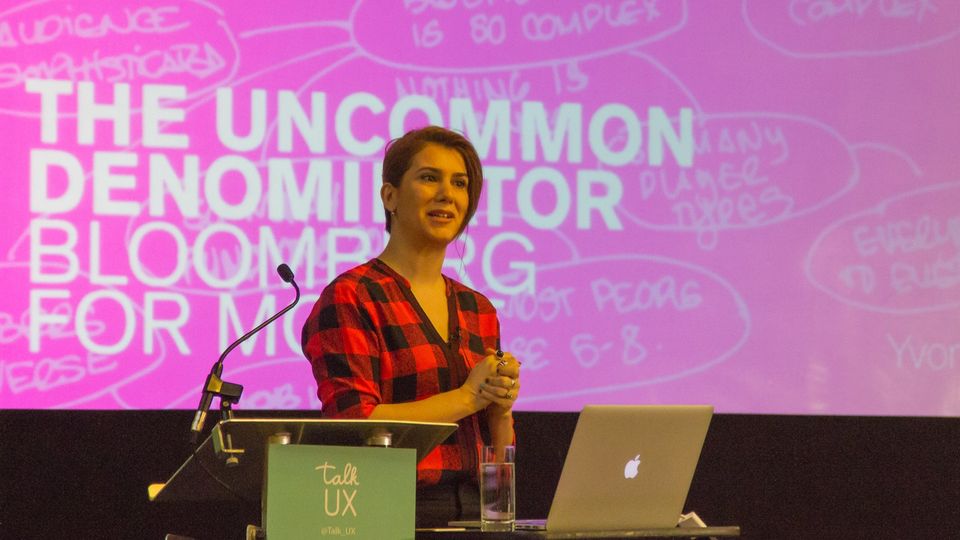The Uncommon Denominator : Bloomberg for Mobile

I’m writing up my notes from Talk UX, the conference on UX aimed at getting new and differing voices heard.
The day kicked off with Yvonne Caravia from Bloomberg who discussed designing for experts in a mobile world. People may be vaguely aware of Bloomberg terminals – those crazy DOS-like interfaces that look like you’re some type of hacker genius. Caravia described the challenges and opportunities for these types of interfaces.
Bloomberg operators can put multi-Cinema Display graphic designers to shame – it’s not uncommon for them to have 6 screens of data “and use spatial memory to know where things are and notice any changes”.
This reminds me of Pushing Tin, the John Cusack movie about airport controllers. Whether the signals are accurate, I’m not sure, but it seems too weird to not be true.
Caravia also shared some noteworthy trends. I suspect that people wouldn’t be too surprised that the average Briton is (like Zoolander) “always on” – checking their phone 1500 times a day – or that phones aren’t getting smaller. However, I was more interested by the idea of ”apps as OS”. In China, people can use their SIMs to pay for items and there’s a surge in ‘light sites’ (single pages created solely for being discovered via QR code and consumed once). For example, over a billion traditional Chinese red envelopes of cash were sent via mobile service WeChat for the Chinese New Year.
Finally, she pointed to machine learning (combined with qualitative research) as the future. When it comes to the personalised information that her team needed to provide to Bloomberg controllers for a mobile device, there was no way that they could predict it or a controller would manually change it. Understanding what they would generally want combined with means to personalise it meant that they could create a solution that met their needs “though it took years for the technology to catch up”.
Personalized mobile info for Bloomberg – based on qual research, "took yes for tech to be ready" @Twyvo #talkux pic.twitter.com/J4ReocQyOx
— Vicky Teinaki (@vickytnz) March 5, 2015
Image NC-BY-CC by Talk UX.
Member discussion